
This is free.
Mechanised thinning pine to waste - An option for small-scale forest growers
Jack Palmer and Sam Taylor, New Zealand Tree Grower August 2023.
Thinning radiata pine is a standard silvicultural practice. Traditionally the work has been undertaken by manual crews but as forestry becomes more mechanised, these crews are increasingly scarce. Forme Consulting Group observed a mechanical waste thinning operation in conditions comparable to those in a small-scale forest and were impressed with what they saw. A time study of the mechanical operation enabled its costs to be calculated.
Radiata pine trees are generally planted at around 800 to 1,100 stems a hectare and this relatively dense stocking forces them to grow straight with small branches. If left un-thinned, the result will be a high-volume crop but of small diameter trees.
Thinning the crop to waste, where thinned trees are felled and left on the forest floor, reduces the number of standing trees generally by between about a half and two-thirds so that the remaining trees can grow
on to the optimum size for intended markets.This thinning has traditionally been a manual job for skilled silviculture crews who can work safely and efficiently to thin a crop, using chainsaws, to a specified number of trees per hectare.
Mechanisation throughout the forest industry has increased which means that finding a motivated, experienced thinning crew is becoming difficult.
Owners of small forests in particular are finding it more difficult to obtain suitably qualified and experienced contractors to thin their forests to an appropriate final crop stocking.
Mechanised waste thinning is one potential solution and this is becoming increasingly common in larger forests.To understand whether mechanised thinning could be an option for owners of small forests, two of the Forme Consulting team went to observe a mechanised waste thinning operation in Kaingaroa Forest, managed by Kaingaroa Timberlands Ltd.The operation was being undertaken in an area of the forest not dissimilar to that often found in woodlots, with small sharp incised gullies and awkward drop-offs to navigate.The area is waste thinned purposely because the land means it has been assessed as unsuitable for cost-effective production thinning which is undertaken elsewhere in Kaingaroa Forest.
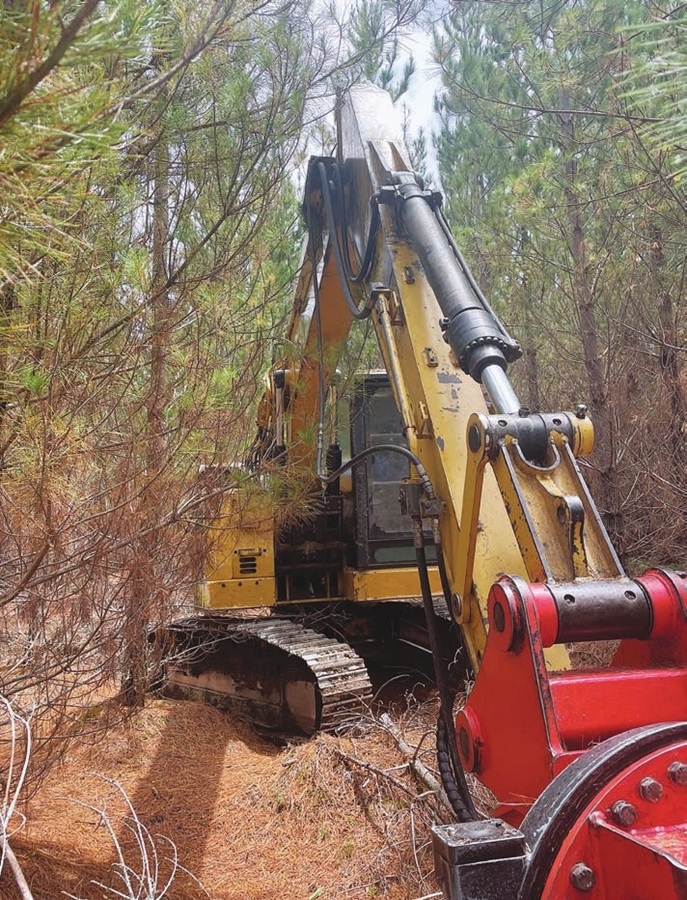
The contractor and machines
The mechanised thinning operation was observed in November 2022 in a range of weather conditions. Local contractor Nick Tombleson’s team,Tombleson Logging Ltd, were carrying out the work, using three CAT 315F excavators fitted with Ensign or 350 Wood Cracker heads.The machines are zero-swing models, meaning they are very manoeuvrable in tight spaces and can avoid damaging residual crop stems.
The forest stand being thinned was established in 2011 with radiata pine seedlings at approximately 833 stems a hectare. Recent inventory indicated the current stocking was 741 stems a hectare after an initial manual thinning a few years earlier.This mechanised operation was targeting residual stocking down to 450 stems a hectare and aiming for a rectangular spacing of 4.7 metres between trees.
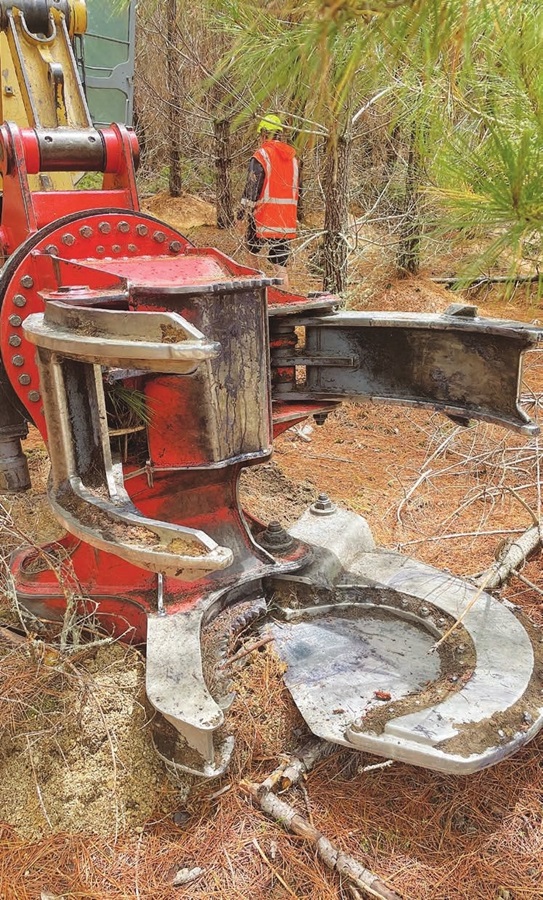
The time study data
Time studies were carried out to determine the different elements involved – felling, positioning, clearing and delays which could be operational, mechanical or something else.To quantify the productivity of the machines and compare mechanical waste thinning
to traditional chainsaw waste thinning, a value was determined on the hectares per day per worker and machine.Total working time per tree, total trees removed in the study, thinning prescription and working day less delays were used to calculate the hectare each day per worker-and-machine rate of 0.866 hectares.
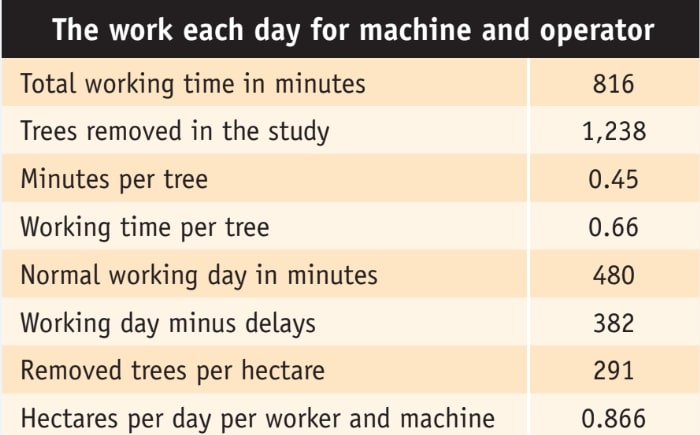
Calculating the cost
Costing methods for forest machinery are in common use by owners of large forests and contractors when negotiating contract rates. Indicative daily costs of operating the mechanised thinning machine were calculated using two alternative sets to obtain a fair total figure.
Business Management for Logging is a later version of the costing handbook for loggers first produced by the NZ Logging Industry Research Association in 1981. It has been reviewed and updated twice since then with a further revised version due for release. Informe Harvesting 2020 and daily rate estimates is a publication widely subscribed to by industry and is based on a comprehensive costing methods originally developed by the New Zealand Forest Service. It has been updated and refined by Forme Consulting Group over the years.
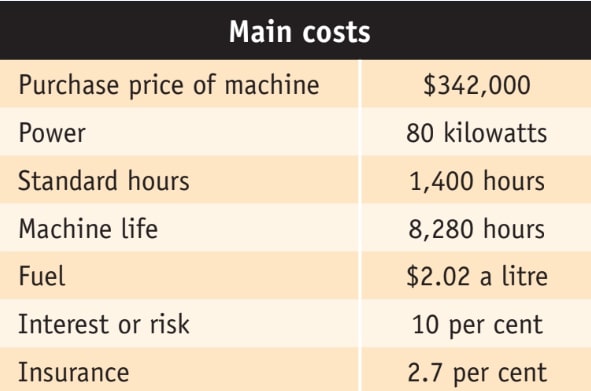
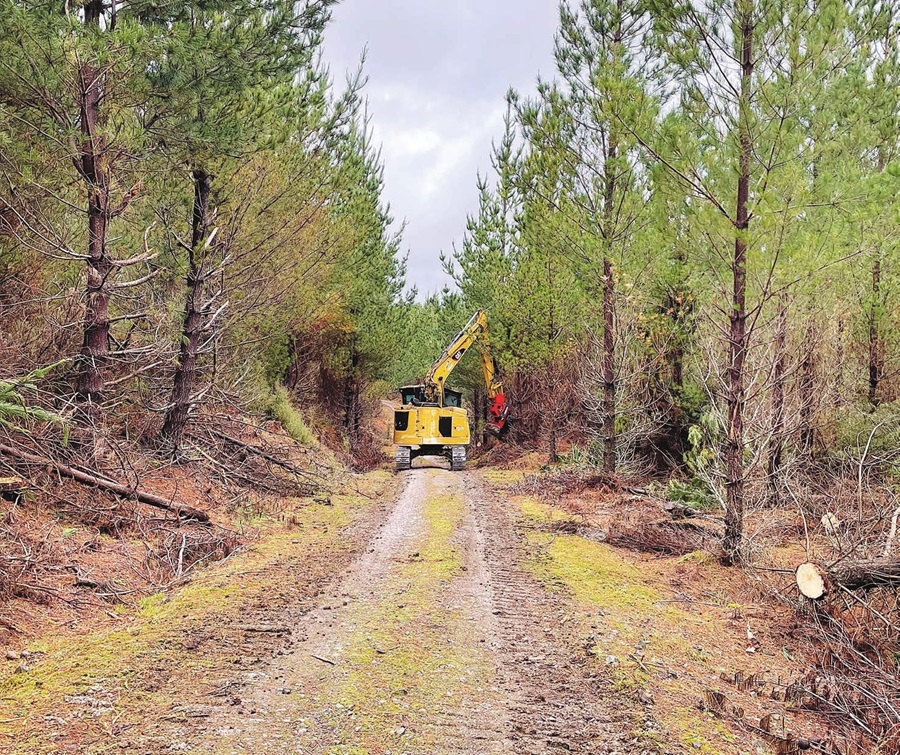
The inputs and outputs have been identified for each of the methods in the following tables. Individual cost components vary between the differing methods used by the different systems.
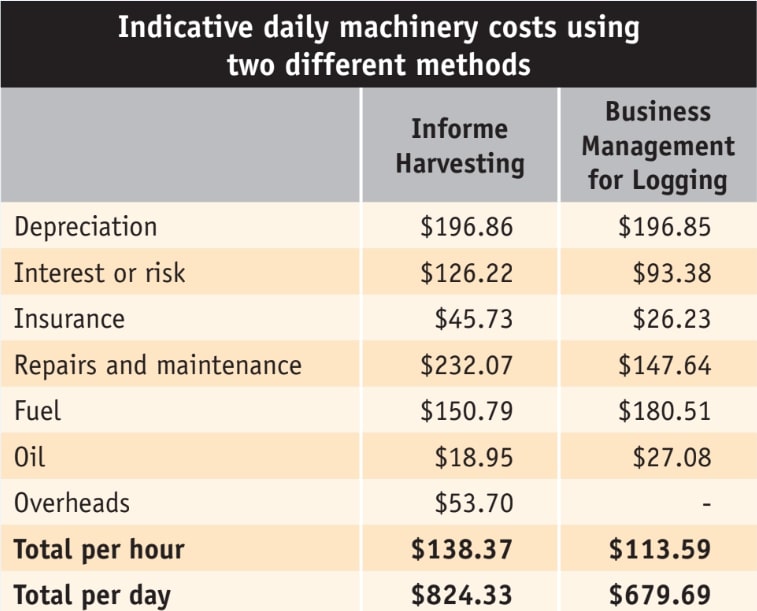
To complement the machinery costs we have constructed an estimate based on a single crew – the machine operator.The estimate incorporates wages and a vehicle with one operator.
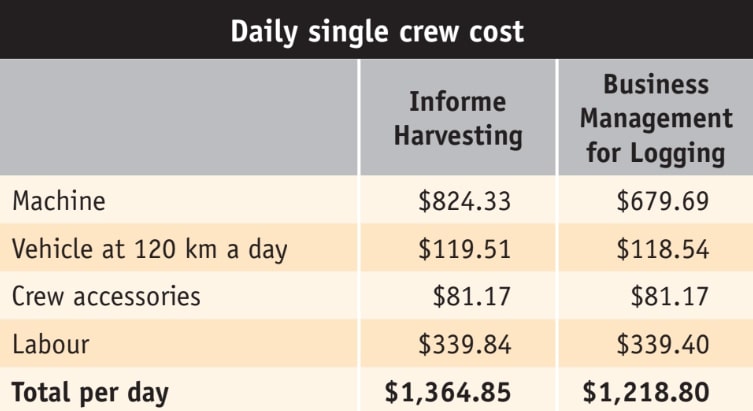
With a productivity rate of 0.866 hectares a day for each worker and machine, along with the two indicative machine costs, two comparative rates per hectare for the mechanised waste thinning were calculated.These rates are now in a format which can be compared with the cost of manual thin to waste operations, which are normally charged at a rate of dollars an hour.
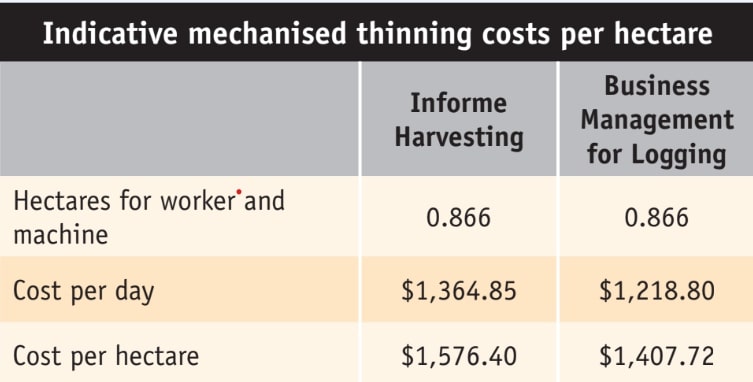
Benchmark costs show that the cost for manual thinning has increased significantly over the past few years. A generic range for manual waste thinning is between $1,000 and $1,400 a hectare.These manual waste thinning rates can be compared to the calculated mechanised waste thinning rates above. However, it is important to acknowledge that waste thinning contract rates are specific to the prescribed characteristics of the block, such as average tree height, the terrain and the challenges involved in walking from tree to tree.
Mechanised thin-to-waste
When observing the mechanised thinning operation, we noted that residual stand damage was minimal due to the care and skill of the machine operators.We see no reason why similar mechanised thinning operations, which are common in other parts of the world and often on much more difficult topography, cannot become a normal practice. Small-scale forest growers considering a mechanised thin to waste operation need to bear the following in mind.
Crop condition and topography
The equipment used in mechanised waste thinning uses small highly manoeuvrable machines which leave little damage to the residual crop. But the density of stocking is a main consideration for machine access and the end result of the operation.Very densely stocked crops are difficult to thin.
Topography is also important. Steeper slopes can affect productivity and the operator’s ability to protect the residual trees. However, smaller, more powerful and sophisticated felling equipment is increasingly available.
Thinning on time
Production forests need to be thinned on time and a delay due to a lack of local manual crews can be a
problem. If the stand has been left to grow for too long, any thinning operation, including a mechanised one, will be more difficult, dangerous and expensive due to the need for advanced felling skills. It can even mean the stand cannot be thinned mechanically if trees have grown larger than the machine’s capabilities.
Introducing new practices
A potential option to increase the working terrain of the mechanised thinning machinery is to pair it with a traction-assist machine like a T-Winch – the see article in the February Tree Grower. Using this method will allow the thinning machine to travel safely on steeper slopes while still only requiring one operator because the winch is remotely controlled. Introducing more machines to the system will increase the thinning cost
and adjustments to silvicultural practices may be required to run a cable between the machines. As the available labour pool decreases for manual thinners, forest owners will have to be prepared to adopt new practices to continue to meet forest health and quality requirements.
Conclusions
Across the forestry sector workers are being taken off the ground and put into machines. As safety concerns for manual thinners increase, the demand for, and availability of, mechanised thin-to-waste operators will probably increase. Smaller and more sophisticated equipment is available and the change in tree harvesting from motor- manual to mechanised is creating opportunities for growers at all levels to consider mechanised thinning and harvesting operations.
Although this study was carried out in a large-scale corporate forest, we see no reason why mechanised thin-to-waste operations cannot be adopted by small growers.The cost of mechanical thin-to-waste determined in this study is comparable to that of manual thin-to-waste operations, making it financially viable for small growers under the right conditions while creating a safer environment for forest workers.
A full technical report of this article is available on the Forest Growers Research website //fgr.nz.The assistance and co-operation of Tombleson Logging Ltd and Kaingaroa Timberlands Ltd is gratefully acknowledged.
Jack Palmer is a registered forestry consultant and Sam Taylor is a graduate forest engineer. Both work for Forme Consulting Group Ltd, an independent forestry consultancy company.
 Farm Forestry New Zealand
Farm Forestry New Zealand